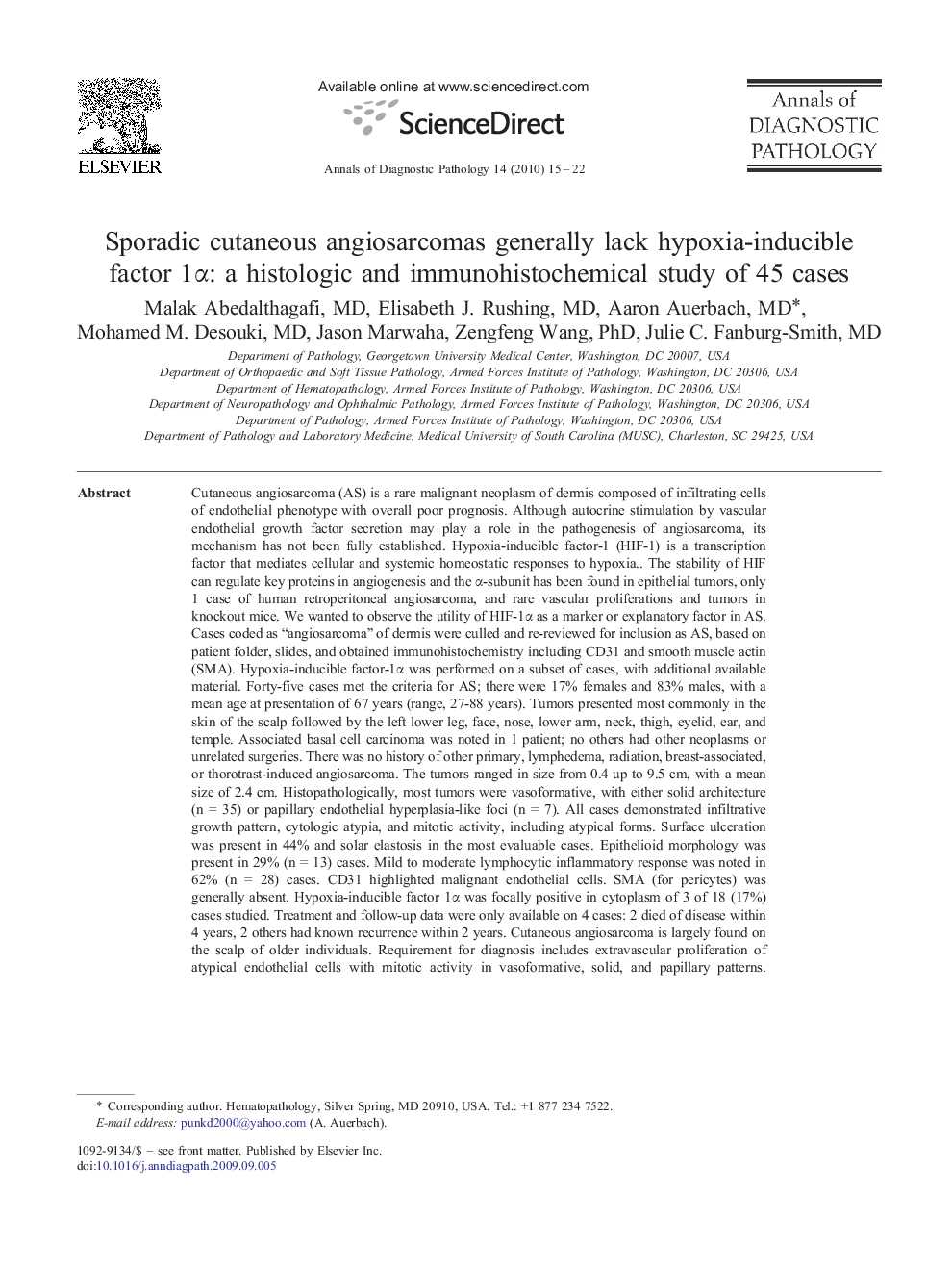| Article ID | Journal | Published Year | Pages | File Type |
|---|---|---|---|---|
| 4130532 | Annals of Diagnostic Pathology | 2010 | 8 Pages |
Cutaneous angiosarcoma (AS) is a rare malignant neoplasm of dermis composed of infiltrating cells of endothelial phenotype with overall poor prognosis. Although autocrine stimulation by vascular endothelial growth factor secretion may play a role in the pathogenesis of angiosarcoma, its mechanism has not been fully established. Hypoxia-inducible factor-1 (HIF-1) is a transcription factor that mediates cellular and systemic homeostatic responses to hypoxia.. The stability of HIF can regulate key proteins in angiogenesis and the α-subunit has been found in epithelial tumors, only 1 case of human retroperitoneal angiosarcoma, and rare vascular proliferations and tumors in knockout mice. We wanted to observe the utility of HIF-1α as a marker or explanatory factor in AS. Cases coded as “angiosarcoma” of dermis were culled and re-reviewed for inclusion as AS, based on patient folder, slides, and obtained immunohistochemistry including CD31 and smooth muscle actin (SMA). Hypoxia-inducible factor-1α was performed on a subset of cases, with additional available material. Forty-five cases met the criteria for AS; there were 17% females and 83% males, with a mean age at presentation of 67 years (range, 27-88 years). Tumors presented most commonly in the skin of the scalp followed by the left lower leg, face, nose, lower arm, neck, thigh, eyelid, ear, and temple. Associated basal cell carcinoma was noted in 1 patient; no others had other neoplasms or unrelated surgeries. There was no history of other primary, lymphedema, radiation, breast-associated, or thorotrast-induced angiosarcoma. The tumors ranged in size from 0.4 up to 9.5 cm, with a mean size of 2.4 cm. Histopathologically, most tumors were vasoformative, with either solid architecture (n = 35) or papillary endothelial hyperplasia-like foci (n = 7). All cases demonstrated infiltrative growth pattern, cytologic atypia, and mitotic activity, including atypical forms. Surface ulceration was present in 44% and solar elastosis in the most evaluable cases. Epithelioid morphology was present in 29% (n = 13) cases. Mild to moderate lymphocytic inflammatory response was noted in 62% (n = 28) cases. CD31 highlighted malignant endothelial cells. SMA (for pericytes) was generally absent. Hypoxia-inducible factor 1α was focally positive in cytoplasm of 3 of 18 (17%) cases studied. Treatment and follow-up data were only available on 4 cases: 2 died of disease within 4 years, 2 others had known recurrence within 2 years. Cutaneous angiosarcoma is largely found on the scalp of older individuals. Requirement for diagnosis includes extravascular proliferation of atypical endothelial cells with mitotic activity in vasoformative, solid, and papillary patterns. Absence of SMA can prove extravascular extension of tumor, outside their normal vessel confines. Cutaneous angiosarcoma generally lacks HIF-1α expression. Accordingly, the hypoxic response pathway is not thought to be a documentable common mechanism of angiogenesis in this entity.
